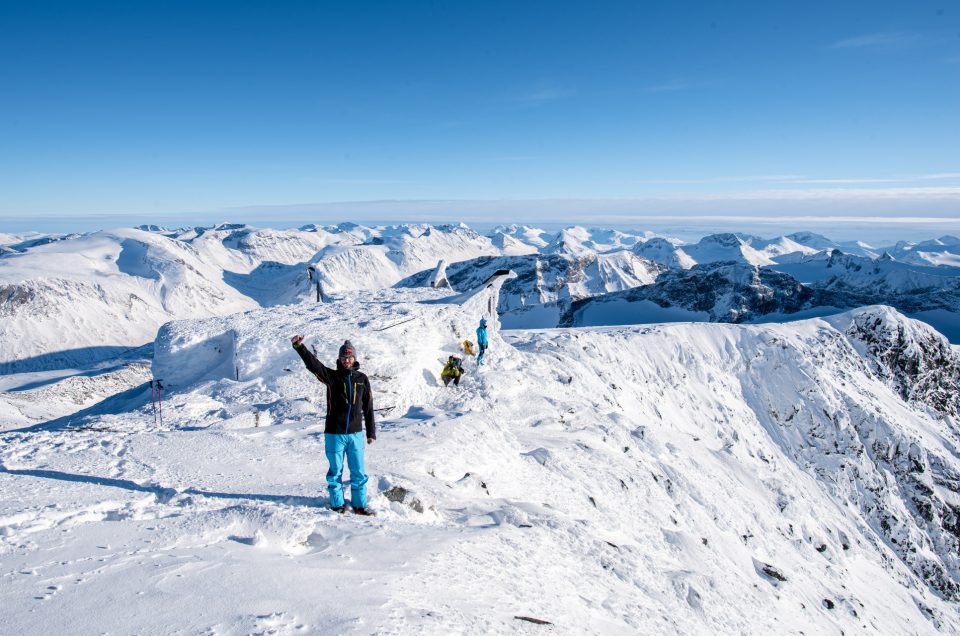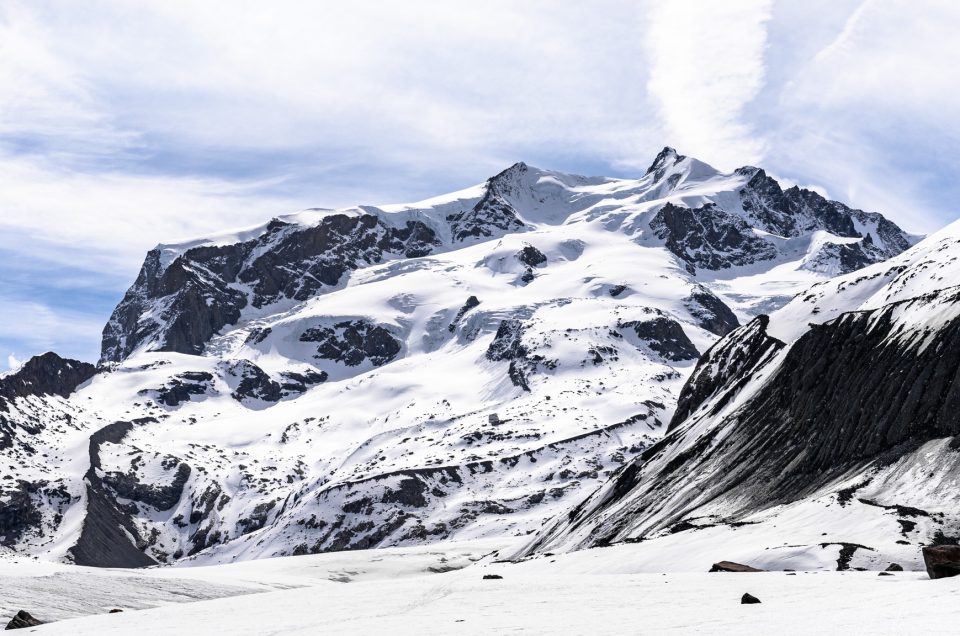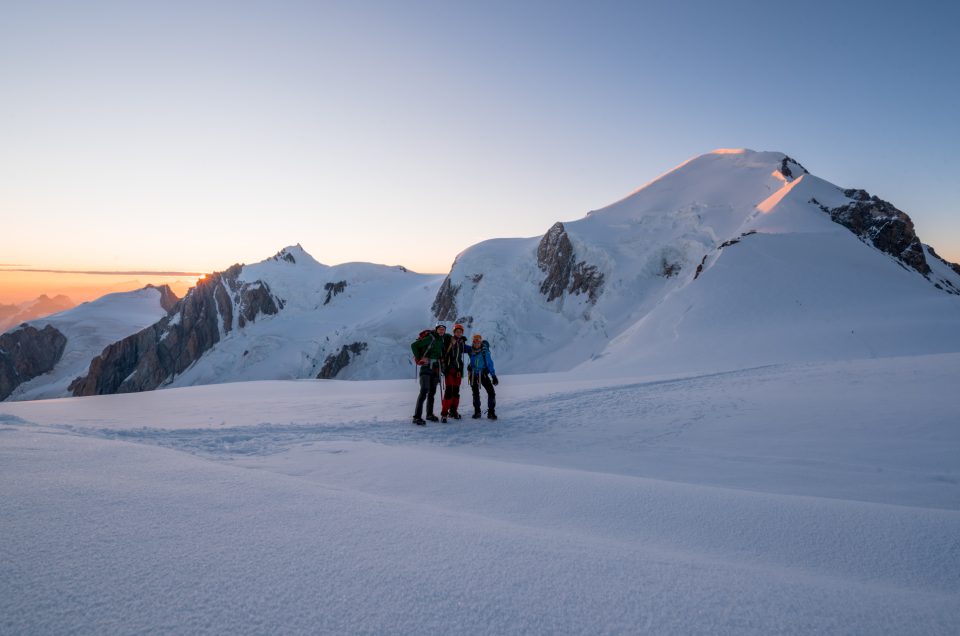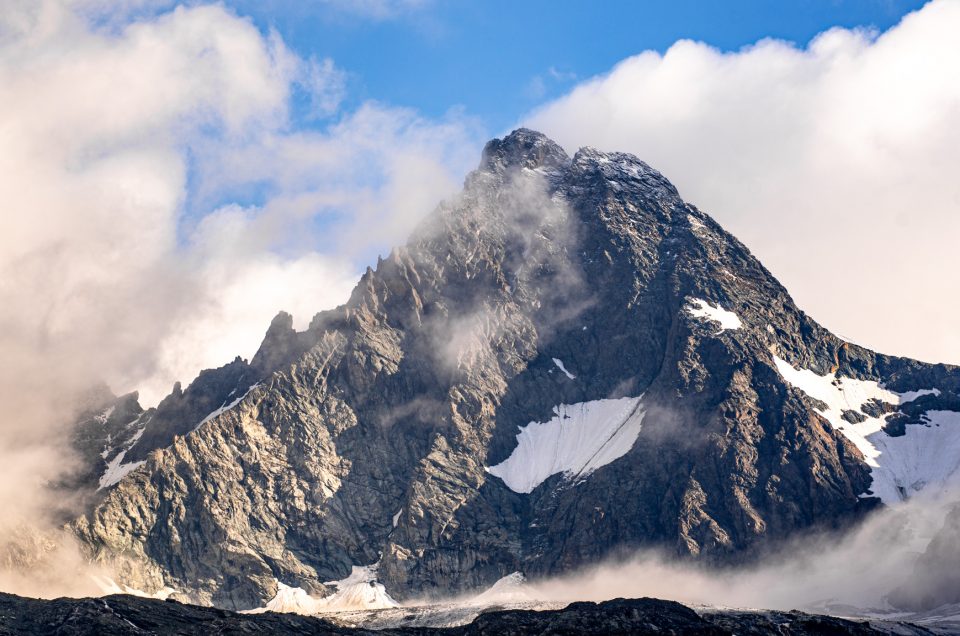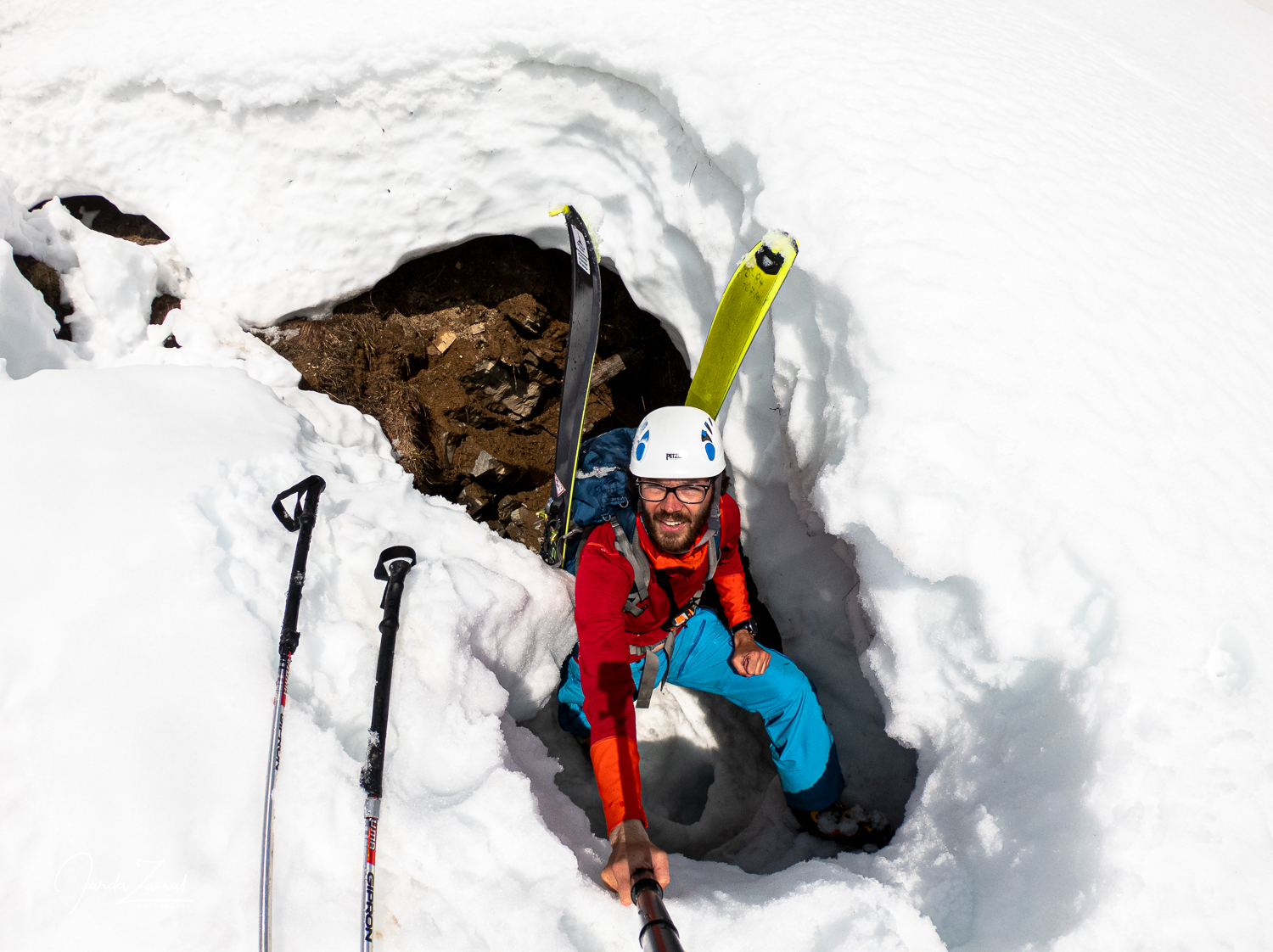Last Updated on July 12, 2024
Galdhøpiggen, Norway’s and also Scandinavia’s highest mountain is located in the Jotunheimen National Park. It isn’t easy to reach. It is about the same distance from Oslo, Bergen and Trondheim so it takes time to get there but the visit definitely pays off. The Norwegian mountains are beautiful. In this article you can find all the information you need before your own climb of Norway’s highest mountain. Besides practical information you can also read about my own experience of summiting Galdhøpiggen in winter.
Important information for climbing Galdhøpiggen from Spiterstulen
Short description of the ascent from: Hiking on rocks all the way to the top, well marked
Essential equipment: Standard hiking equipment sufficient
Best time to visit: June - October or March - May for winter climb
Fees or restrictions: No
Camping allowed: Yes
Nearest accommodation/food supply: Spiterstulen and Juvasshytta or the best rated accommodation nearby at Elveseter
Height of the peak: 2,469 m
Distance to the top: 6.1 km
Time to ascend from Spiterstulen to Galdhøpiggen: 3 hours 10 minutes
Elevation climbed: 1,418 m
Water availability on the mountain: There are streams on the way up to 1,600 m
Difficulty level: *** (6 stars maximum)
Personal rating of the mountain: ***** (6 stars maximum)
Beer on the peak: Bad Mango ** (6 stars maximum)
Two most popular routes to Galdhøpiggen
There are two main routes leading to the highest peak on Norway. Similarly to the route to Swedish highest mountain Kebnekaise, you can choose to take a longer hiking route with no glacier crossing or shorter route which requires glacier experience:
- From Spiterstulen: This is the most popular route to climb Galdhøpiggen and is also known as the “normal route.” It is a non-technical climb that can be done by anyone with reasonable fitness and endurance. The trailhead starts at Spiterstulen, a mountain lodge located in Jotunheimen National Park. From there, it takes around 4-6 hours to reach the summit, depending on your pace. The trail is well-marked and easy to follow.
- From Juvasshytta: This route is more challenging than the Spiterstulen route and is recommended for experienced hikers or climbers. The trailhead starts at a higher altitude compared to Spiterstulen. Juvasshytta, a mountain lodge located at the foot of Galdhøpiggen lies at 1,850 m. From there, it takes around 5-7 hours to reach the summit. The trail is steep and rocky and you will have to pass a glacier, with some sections that require the use of crampons. The route is only open during the summer months and is subject to weather conditions. If you don’t have glacier experience, a mountain guide is recommended.
Maps of the climbs from Spiterstulen and Juvasshytta to Galdhøpiggen
Click on the maps to see the distance, elevation and more details about the routes.
My story of climbing Galdhøpiggen in winter
I climbed Galdhøpiggen as a part of my project European Peaks during which I climbed the highest peak of every European country. After visiting the highest mountains of Vatican, San Marino and Monaco, I waited for suitable conditions for climbing the next mountains. The climbing break took in the end two months. At the beginning of March the days were finally getting longer in Scandinavia (about 10 hours of sunshine) and the weather was improving. The dark northern winter seemed to be over. Time to climb a new peak!
Freezing Scandinavia
My Norwegian friends told me that March is the best time to climb Galdhøpiggen. There are wonderful winter conditions and the mountains are generally without tourists. Ideal mountain for tour skiing. This vision attracted me so I teamed up with two friends Honza and Víťa, who both love ski touring, and we set out for a trip.
The only thing my Norwegian friends didn’t disclose was that it will be cold. The weather forecast was predicting −21°C for the weekend we had planned our trip. We were afraid that the weather might make our climb to Galdhøpiggen impossible but we still decided to try.
We all met at Víťa’s place in Oslo on Friday. The weather seemed to be best directly on Saturday (still −21° C but clear sky and mild wind) so we decided to leave early in the morning to reach Galdhøpiggen already in the afternoon.
Speeding in Norway not recommended
The alarm rang at 3:30 am. We quickly packed our stuff and left Oslo at 4 am. The journey was smooth. You don’t meet many cars on Norwegian roads on a Saturday morning. It would just be great to have different road regulations in Norway. The speed limit of 90 km/h on highways is absurd. My experience told me however that exceeding this limit could result in a significantly increased budget of this trip. One year ago I was fined 5000 NOK (about 500 EUR) for speeding by 5 km/h and therefore we did not take a risk.
We arrived to Spiterstulen, the start of our climb at ten o’clock. This time was still promising. We can probably make it to the summit and back before sunset, which is expected at 6:45 p.m.. That’s enough time. We quickly packed our backpacks with proper avalanche equipment (the so called “ski alpinist holy trinity” – a shovel, a transceiver (beeper) and a probe), snacks and hot tea. We put on our skis and started our ascent.
Winter paradise around Galdhøpiggen
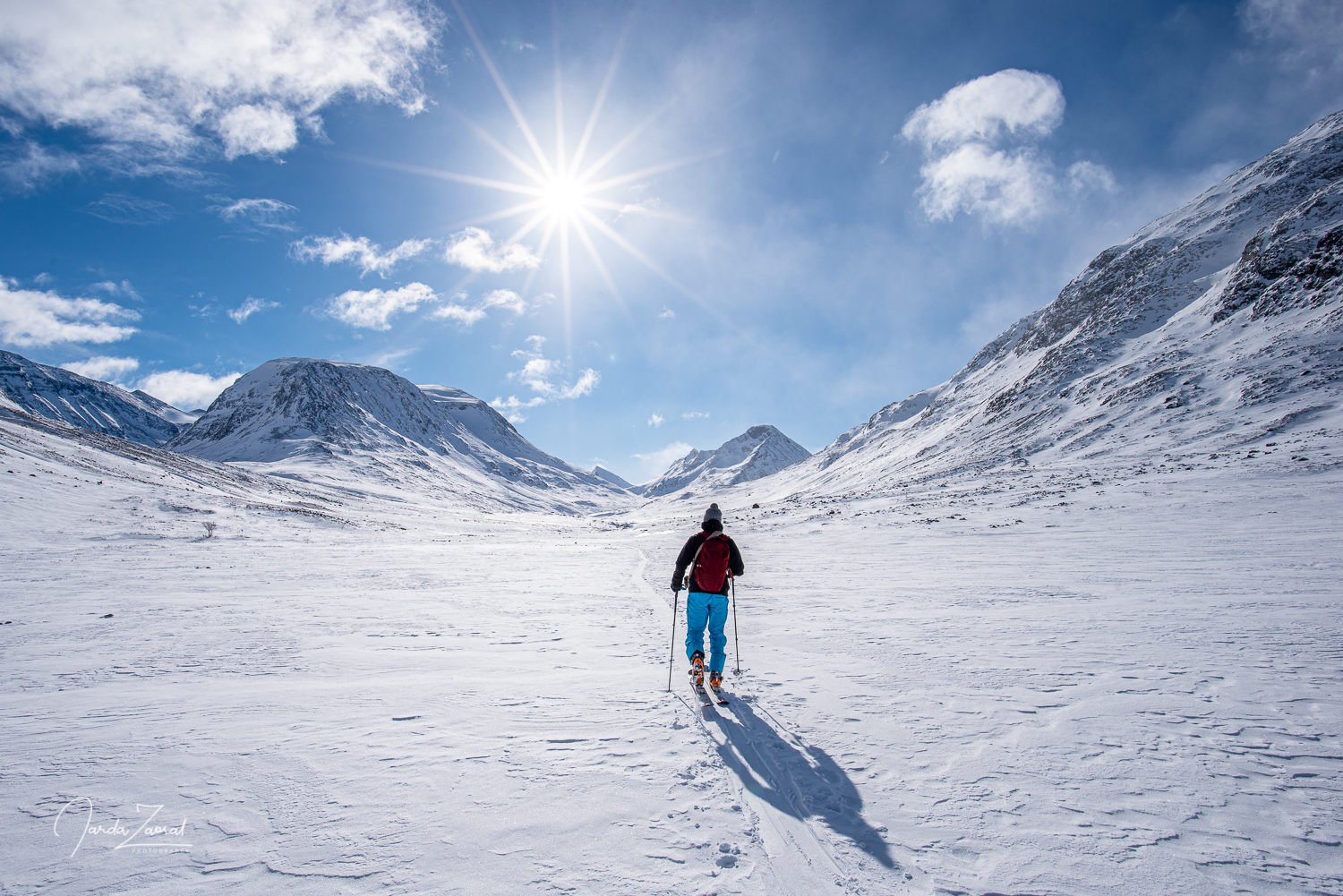
It was cold when we were preparing our equipment but we had to stop after a while for another reason. Surprisingly, we were hot. Thanks to a windless and cloudless sky, we felt warm after the first 200 elevation meters. The first part of the climb was the steepest, which was maybe another reason. We took off a layer and continued up.
Luckily, we were not the only ones trying to reach Galdhøpiggen that day. Other enthusiastic ski mountaineers headed up ahead and created a nice trail so we saved some time by not having to look for the best possible route. After two hours we had the steepest passage behind us and reached the ridge. There was not much snow so we are took off our skis for a while and crossed the rocky passage with skis on our backs. Even though there was not much snow we were happy anyway. It means that the avalanche danger is low.
Fight for nose
After the next one and a half hour we stood on the top of Svellnose (2,272 m) from which we saw Galdhøpiggen for the first time. The wind also began to blow. It was suddenly very cold. We put on all of our layers. We climbed to the top as quickly as possible to warm up. The peak seemed to be near but the climb still took us an hour.
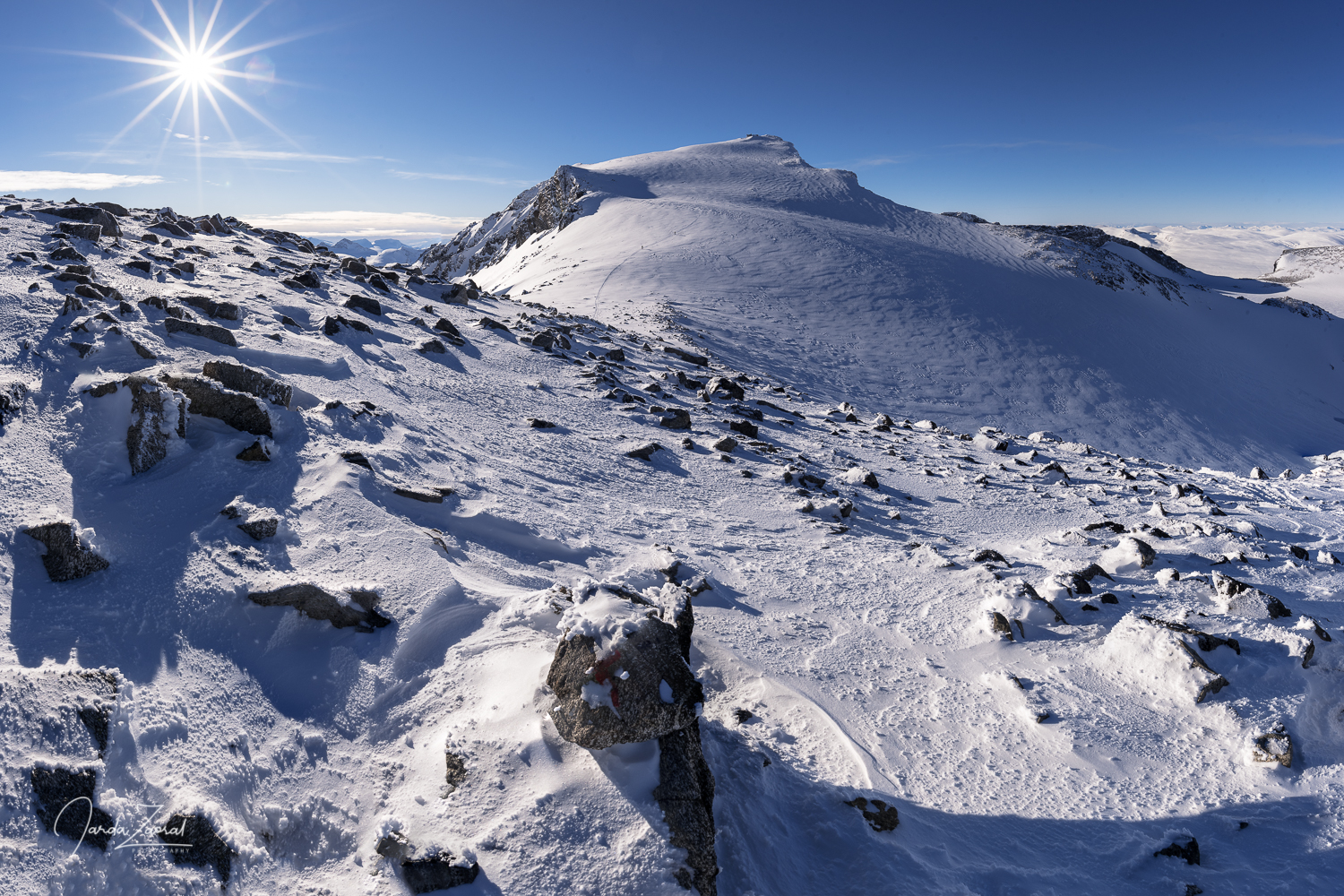
Finally we were on Galdhøpiggen. The views from the top were wonderful. I regretted a bit that all my previous ascents took place in summer. Winter ascents are simply amazing. I started to photograph the winter paradise. Since I was constantly moving I was not cold but my friend started to have a problem. I was in the middle of photographing a large panorama when Honza called me: “We have to go down. Víťa has a completely white nose. He doesn’t feel it at all.”
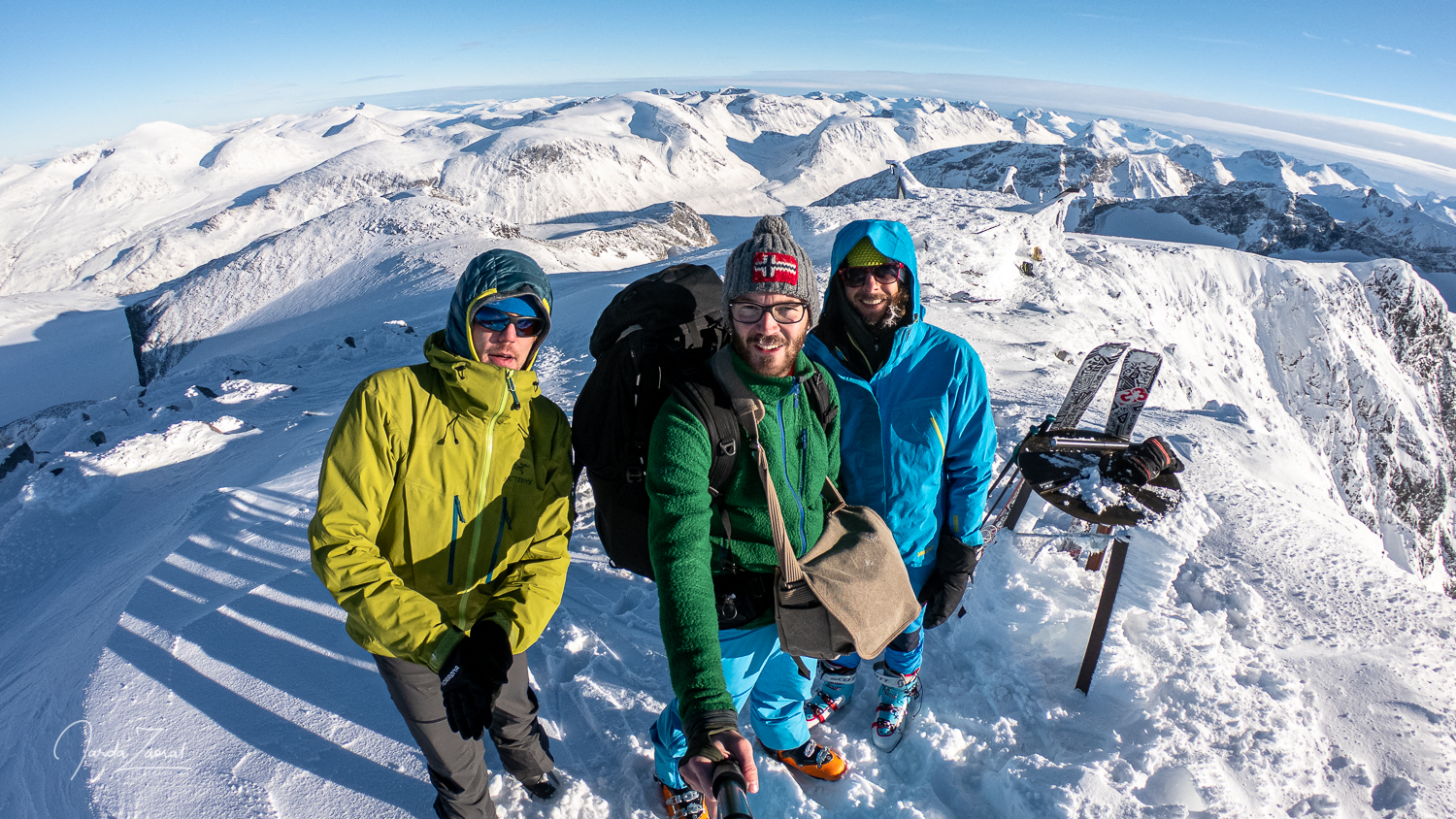
It was clear that the fun was over. I sent my friends ahead so they didn’t have to wait until I had packed my photography equipment. Honza and Víťa are very good skiers so they left quickly. I just saw them gradually turn into two small dots and they disappeared soon beyond the horizon. I wasn’t happy about that. Even though I regard myself as a good skier (I worked for several years as a ski instructor), this was only my second trip on back-country skis in my life.
Don’t ski with a heavy backpack
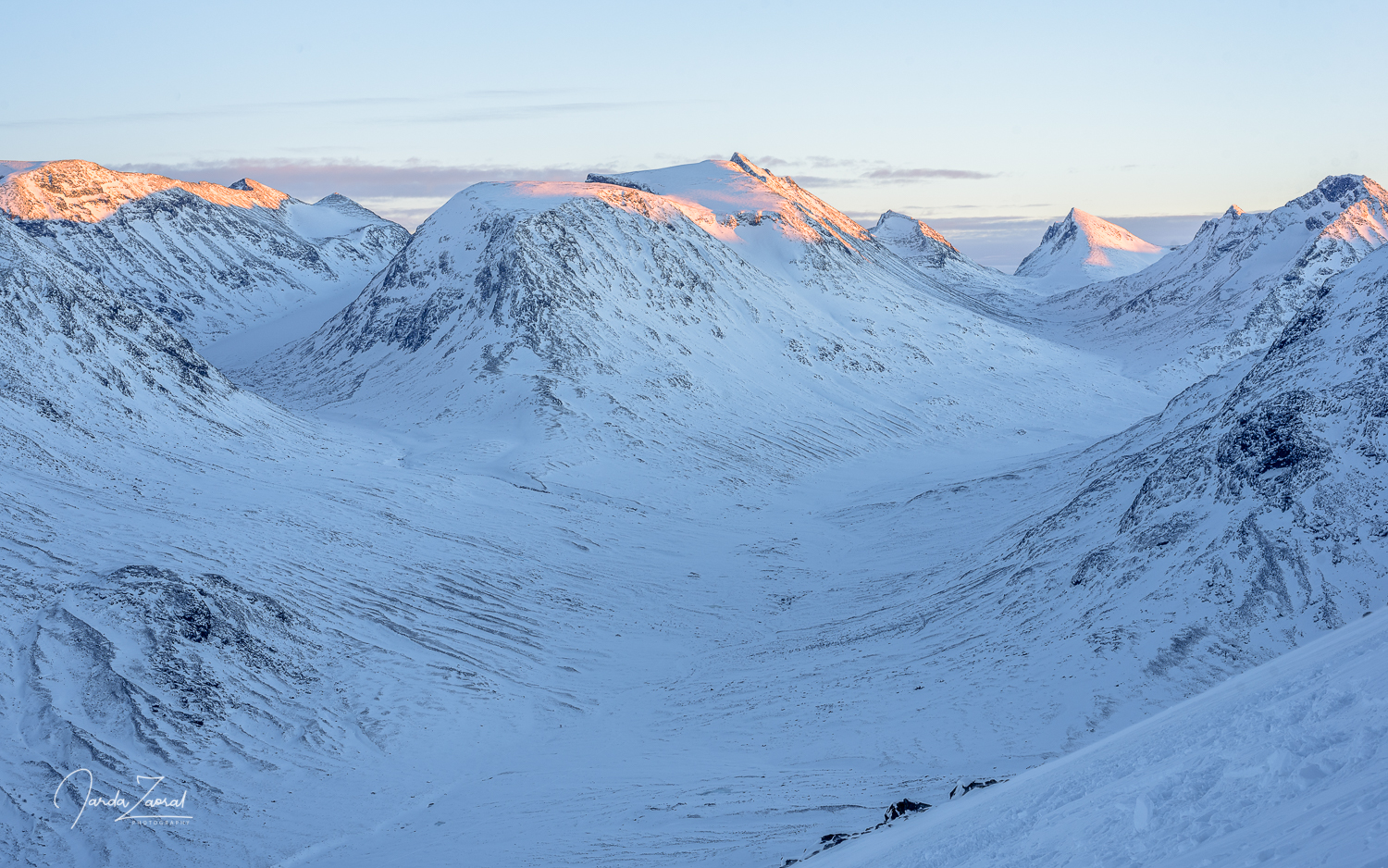
I realized that skiing with a heavy backpack isn’t fun. The snow conditions were not the best ones. There was an unpleasant ice crust so the skiing was difficult. I skied down in the most precise plow-style I could to descend as safely as possible. I went down at the speed of a racing worm. Finally, I appreciated the lessons as a ski instructor when I had to be in the plow position all the time. The descent was very long. So long. Infinite! My legs were hurting. The sun started to set and the visibility was getting worse. I just kept one hundred percent focus not to make any wrong move. I don’t know how I would deal with a fall or some injury by myself at −21° C and in darkness.
Fortunately, my legs were sufficiently trained so I managed to get back to Spiterstulen after two hours of a seemingly endless descent. I came to the reception where Víťa and Honza were warming up. Víťa’s nose was already bright red. It looked good. His nose is safe.
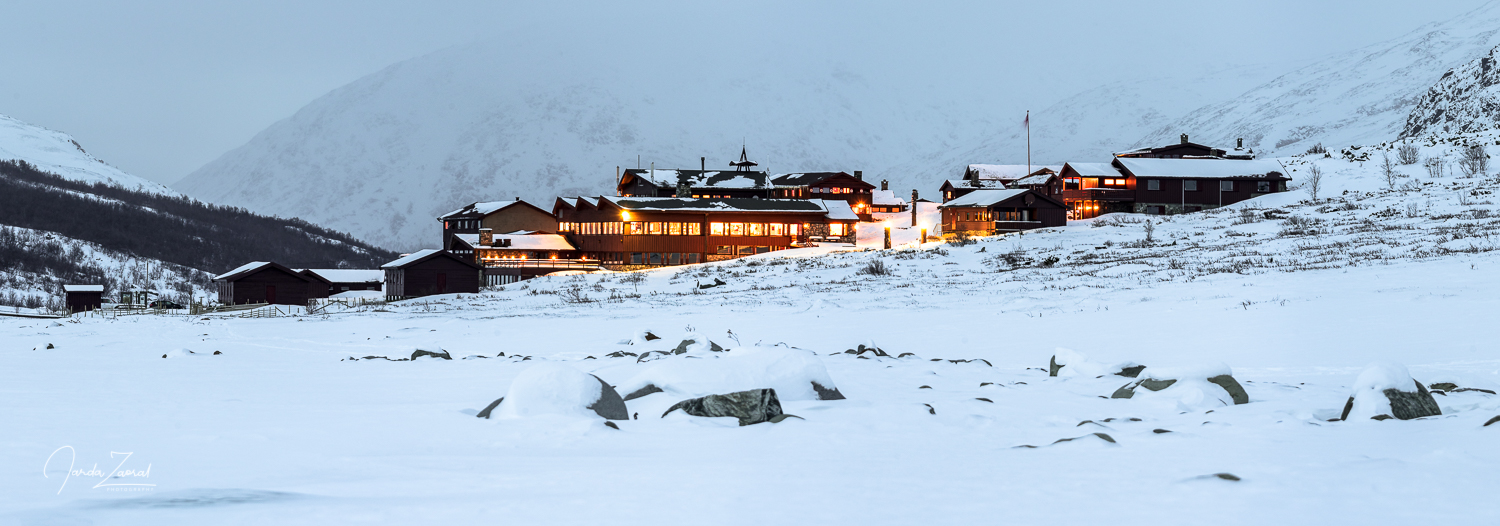
My tips for climbing the mountain Galdhøpiggen:
- Although there is a hut on top of Galdhøpiggen it is closed in winter. Don’t rely on it and check the opening times.
- Take your own meal with you to save money. It is very expensive to eat in the hut Spiterstulen and there is no kitchen to prepare your own food.
- For skilled skiers, Galdhøpiggen is suitable for a back-country skiing trip. The difficulty isn’t very high but be aware of the snow conditions and avalanche danger.
Disclosure: Please note that some of the links above may be affiliate links, and I earn a small commission at no additional cost to you, if you make a purchase. I recommend only products and services of companies I use and the income goes to keeping the website running.
